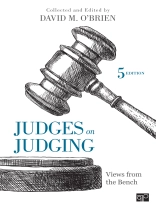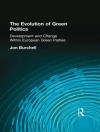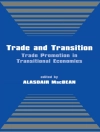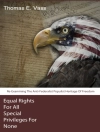Thoroughly revised and updated for this Fifth Edition, Judges on Judging offers insights into the judicial philosophies and political views of those on the bench. Broad in scope, this one-of-a-kind book features ‘off-the-bench’ writings and speeches in which Supreme Court justices, as well as lower federal and state court judges, discuss the judicial process, constitutional interpretation, judicial federalism, and the role of the judiciary. Engaging introductory material provides students with necessary thematic and historical context making this book the perfect supplement to present a nuanced view of the judiciary.
‘Judges on Judging is consistently rated by my students as their favorite book in my class. No other single volume provides them with such a clear and accessible sense of what judges do, what courts do, and the way judges think about their roles and their courts.’
—Douglas Edlin, Dickinson College
表中的内容
Part I: Judicial Review and American Politics
Chapter 1: The Doctrine of Judicial Review: Mr. Marshall, Mr. Jefferson, and Mr. Marbury – Warren E. Burger
Marbury v. Madison: Act One, The Setting
Marbury v. Madison: The Second Act
Epilogue
Chapter 2: The Supreme Court in the American System of Government – Robert H. Jackson
The Supreme Court as a Unit of Government
Executive v. Legislative
Federal Power v. State Power
State v. State
Majority v. Individual
Part II: The Dynamics of the Judicial Process
Trial Judges and the Adversarial Process
Appellate Judges and the ‘Caseload Crisis’
The Supreme Court and the Judicial Process
Chapter 3: The ‘Fight’ Theory versus the ‘Truth’ Theory – Jerome Frank
Chapter 4: The Adversary Judge: The Experience of the Trial Judge – Marvin E. Frankel
The Role as Written
The Adversary Performance
The Judge Embattled
The Judge Discomforted
Chapter 5: The Business of the U.S. District Courts – D. Brock Hornsby
Civil Lawsuits
Criminal Prosecutions
Conclusion
Chapter 6: What I Ate for Breakfast and Other Mysteries of Judicial Decision Making – Alex Kozinski
Chapter 7: Whose Federal Judiciary Is It Anyway? – Stephen Reinhardt
Chapter 8: What Really Goes on at the Supreme Court – Lewis F. Powell Jr.
Chapter 9: The Supreme Court′s Conference – William H. Rehnquist
Chapter 10: Deciding What to Decide: The Docket and the Rule of Four – John Paul Stevens
Chapter 11: The Role of Oral Argument – John M. Harlan II
Chapter 12: The Dissent: A Safeguard of Democracy – William O. Douglas
Search for Certainty
Legislative Process One of Compromise
Interpretation Has Legislative Characteristics
Stare Decisis Has Small Place in Constitutional Law
Uncertainty Necessary for Democracy
Judges Share Crises of Modern Society
Part III: The Judiciary and the Constitution
Chapter 13: Commentaries on the Constitution of the United States – Joseph Story
Preface
Chapter IV. Who Is Final Judge or Interpreter in Constitutional Controversies
Chapter V. Rules of Interpretation
Chapter 14: The Path of Law – Oliver Wendell Holmes Jr.
Chapter 15: The Judge as a Legislator – Benjamin N. Cardozo
Chapter 16: The Notion of a Living Constitution – William H. Rehnquist
Chapter 17: A Relativistic Constitution – William Wayne Justice
Chapter 18: The Jurisprudence of Judicial Restraint: A Return to the Moorings – J. Clifford Wallace
The Constitution and the Theory of Judicial Restraint
The Practical Application of Judicial Restraint
Judicial Restraint′s Response to Judicial Activism
Chapter 19: Tradition and Morality in Constitutional Law – Robert H. Bork
Chapter 20: What Am I, a Potted Plant? The Case Against Strict Constructionism – Richard A. Posner
Chapter 21: Originalism: The Lesser Evil – Antonin Scalia
Chapter 22: Judging – Clarence Thomas
Chapter 23: The Constitution: A Living Document – Thurgood Marshall
Chapter 24: The Constitution of the United States: Contemporary Ratification – William J. Brennan Jr.
Chapter 25: Originalism and History – John Paul Stevens
Chapter 26: On Constitutional Interpretation – David H. Souter
Chapter 27: Speaking in a Judicial Voice: Reflections on Roe v. Wade – Ruth Bader Ginsburg
Chapter 28: Our Democratic Constitution – Stephen G. Breyer
Chapter 29: Against Constitutional Theory – Richard A. Posner
Part IV: Our Dual Constitutional System: The Bill of Rights and the States
Chapter 30: The Bill of Rights – Hugo L. Black
Chapter 31: Guardians of Our Liberties – State Courts No Less Than Federal – William J. Brennan Jr.
Chapter 32: First Things First: Rediscovering the States′ Bills of Rights – Hans A. Linde
History
The Logic of Federalism
Putting Principle into Practice
Chapter 33: What Does – and Does Not – Ail State Constitutional Law – Jeffrey S. Sutton
The Content and Length of State Constitutions
The Ease of Amending State Constitutions
Judicial Elections
Lockstep Interpretations
Conclusion
Chapter 34: State Courts at the Dawn of a New Century: Common Law Courts Reading Statutes and Constitutions – Judith S. Kaye
Common Law Courts Construing State Constitutions
Common Law Courts Construing State Statutes
关于作者
David M. O’Brien is the Leone Reaves and George W. Spicer Professor at the University of Virginia. Prior to teaching at the University of Virginia, he taught at the University of California, Santa Barbara, and the University of Puget Sound, where he was chairman of the Department of Politics. He served as a research associate in the Office of the Administrative Assistant to the Chief Justice and, in 1982–1983, as a judicial fellow at the Supreme Court. He also has been a visiting fellow at the Russell Sage Foundation in New York (1981–1982); has been a Fulbright lecturer in constitutional studies at Oxford University, England (1987–1988); has been a Fulbright researcher in Japan (1993–1994); has held the Fulbright Chair for Senior Scholars at the University of Bologna in Italy (1999); and was a visiting professor at Florida International University (2002) and at the Institut d’Etudes Politique, Université Lumière-Lyon II in Lyon, France (2006).Among his many books are Storm Center: The Supreme Court in American Politics, eleventh edition (2017), which won the American Bar Association’s Silver Gavel Award; Constitutional Law and Politics: Struggles for Power and Governmental Accountability and Civil Rights and Civil Liberties, tenth edition, two volumes (2017); Animal Sacrifice and Religious Freedom: Church of the Lukumi Babalu Aye v. City of Hialeah (2004); To Dream of Dreams: Religious Freedom and Constitutional Politics in Postwar Japan (1996); Supreme Court Watch, published annually since 1991; Congress Shall Make No Law: The First Amendment, Unprotected Expression, and the U.S. Supreme Court (2010); Judicial Roulette (1988); What Process Is Due? Courts and Science Policy Disputes (1987); The Public’s Right to Know: The First Amendment and the Supreme Court (1981); and Privacy, Law, and Public Policy (1979). He has coauthored The Judicial Process: Law, Court and Judicial Politics (2015), Courts and Judicial Policymaking (2008) Government by the People (22nd ed. 2008), and Abortion and American Politics (1993); edited or coedited several books, including The Lanahan Readings on Civil Rights and Civil Liberties, third edition (2010) and Judicial Independence in the Age of Democracy: Critical Perspectives from Around the World (2001); and contributed more than 100 articles and chapters in professional journals and books.












